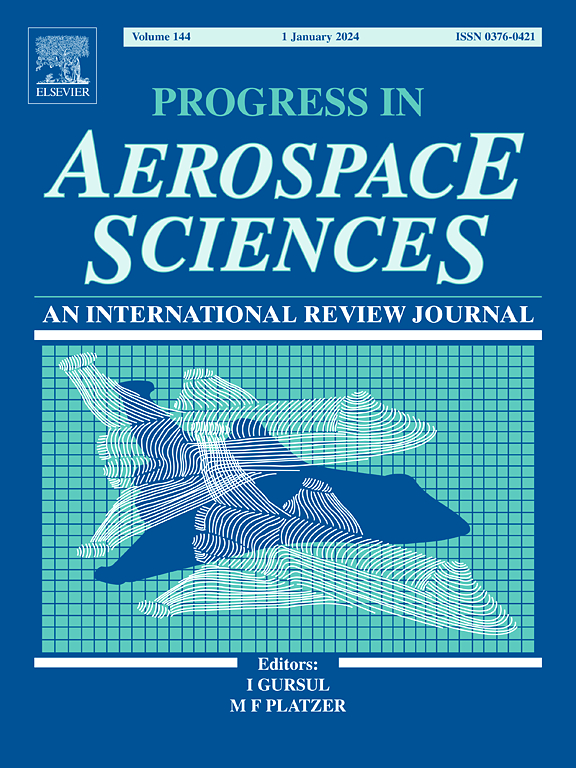Direct Lift Control: A review of its principles, merits, current and future implementations
IF 11.5
1区 工程技术
Q1 ENGINEERING, AEROSPACE
引用次数: 0
Abstract
Direct Lift Control (DLC) is the capability to directly and intentionally influence lift on a fixed-wing aircraft by means of aerodynamic control devices, with minimum change of its angle of attack. Although several definitions exist, with various degrees of ambiguity, the combination of DLC and pitch attitude control has unambiguously proven to reduce pilot workload and improve flying comfort considerably. DLC has historically seen several applications on so-called inflight simulators and, recently, this capability has been rolled out over several aircraft types of the US Navy fleet, massively reducing pilot workload during carrier landings. On the civil front, only one aircraft type has been equipped with this capability, despite its very positive reception by flight crews and passengers. The intention of this paper is to revive interest in civil DLC applications, by reviewing in-depth its basic principles, characteristic features, benefits, and implementations so far. Several modern aircraft and disruptive wing configurations appear to be inherently capable of accommodating DLC functionality from a flight physical, systems, and software point of view. The proven benefits of DLC are likely to well outweigh the cost of the added functionality.
直接升力控制:对其原理、优点、当前和未来实施的综述
直接升力控制(Direct升力控制,DLC)是指在固定翼飞机的迎角变化最小的情况下,通过气动控制装置直接、有意地影响飞机升力的能力。尽管存在几种不同程度的定义,但DLC和俯仰姿态控制的结合已被明确证明可以减少飞行员的工作量并大大提高飞行舒适度。DLC历来在所谓的飞行模拟器上有几个应用,最近,这种能力已经在美国海军舰队的几种飞机上推广,大大减少了航母着陆时飞行员的工作量。在民用方面,只有一种类型的飞机配备了这种能力,尽管机组人员和乘客对它的接受非常积极。本文的目的是通过深入回顾DLC的基本原理、特征、优点和实现,重振对民用DLC应用的兴趣。从飞行物理、系统和软件的角度来看,一些现代飞机和破坏性的机翼配置似乎具有适应DLC功能的内在能力。DLC所带来的好处远远超过了添加功能所带来的成本。
本文章由计算机程序翻译,如有差异,请以英文原文为准。
求助全文
约1分钟内获得全文
求助全文
来源期刊

Progress in Aerospace Sciences
工程技术-工程:宇航
CiteScore
20.20
自引率
3.10%
发文量
41
审稿时长
5 months
期刊介绍:
"Progress in Aerospace Sciences" is a prestigious international review journal focusing on research in aerospace sciences and its applications in research organizations, industry, and universities. The journal aims to appeal to a wide range of readers and provide valuable information.
The primary content of the journal consists of specially commissioned review articles. These articles serve to collate the latest advancements in the expansive field of aerospace sciences. Unlike other journals, there are no restrictions on the length of papers. Authors are encouraged to furnish specialist readers with a clear and concise summary of recent work, while also providing enough detail for general aerospace readers to stay updated on developments in fields beyond their own expertise.
 求助内容:
求助内容: 应助结果提醒方式:
应助结果提醒方式:


